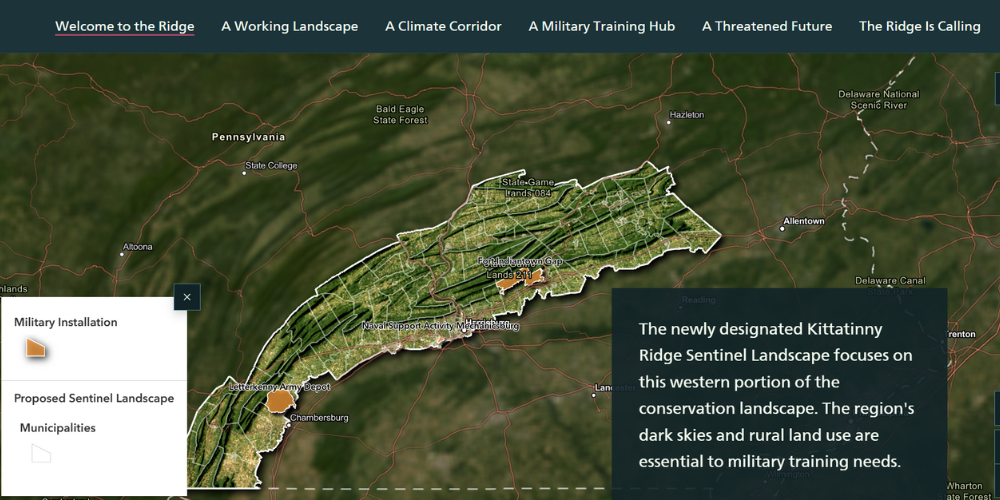
The Kittatinny Ridge was recently designated a sentinel landscape, highlighting the strategic importance of conservation along the Ridge. Land conversion, which decreases open space and increases light and noise pollution, threatens the Ridge’s globally significant natural resources and defense capabilities. Protecting the Ridge’s optimal dark skies safeguards the ability to execute dark skies training as well as the 15–20,000 raptors and countless songbirds travelling through each year.
The Ridge is a critical preserve for hundreds of wildlife species. The Eastern Regal Fritillary Butterfly Program at Fort Indiantown Gap (FTIG) is a shining example of successful wildlife management. This butterfly has seen dramatic population decline due to habitat loss and other environmental pressures. However, FTIG has become a sanctuary for this rare species: Its population at FTIG is the only known one in North America. The perseverance of the regal at FTIG is no coincidence. Military training activities at FTIG, the busiest National Guard training center in the country (2023), create disturbances that maintain rare early successional grassland habitat—essential for the regal’s survival.
In the mid-1990s, FTIG biologists began implementing strategies to monitor and expand the regal population. The captive rearing program, launched with Zoo America in 2011, aims to breed and reintroduce the butterflies into suitable habitats, increasing chance of survival and recovery. With the recent U.S. Fish and Wildlife Service proposal to list the regal as an endangered species, protection efforts would only increase.
Another Ridge military installation, Letterkenny Army Depot (LEAD), a major explosives storage facility, and the Pennsylvania Game Commission (PGC) partnered in 2017 to create a Bobwhite Quail Focus Area at LEAD. In 2014, bobwhite quail were deemed extirpated in the Commonwealth. Extensive habitat management efforts began in 2017. In March 2024, the PGC worked with other states to translocate 87 wild bobwhites to LEAD. In July 2024, the first wild Pennsylvania bobwhites were born at LEAD.
The Ridge is a lifeline for countless species and a symbol of the interconnectedness of nature. While the efforts at FTIG and LEAD have been successful, conservation on the Ridge faces several challenges: incompatible development, climate change, and habitat fragmentation. Currently, only 20 percent of the Ridge is protected, which has attracted a myriad of partners to collaborate on expanding efforts. The successes at FTIG and LEAD highlight the unique and unexpected synergy between active military operations and calculated conservation activities and demonstrate the potential for innovative strategic action in the landscape.
The Kittatinny Ridge Sentinel Landscape (KRSL) brings together stakeholders from different sectors to protect the Ridge’s military assets, preserve ecological integrity and climate change resiliency, and support local economies. The connected forests on the Ridge make it one of the most climate-resilient landscapes per Nature Conservancy data and buffer the impacts of climate change by storing carbon; reducing temperatures; supplying clean drinking water; and absorbing stormwater to mitigate flooding. Designation supports conservation of high-quality freshwater resources that contribute huge volumes to local rivers and the Chesapeake Bay. Wildlife moves along the Ridge, seeking refuge from the changing climate. These climate adaptation benefits extend to Ridge installations, reducing training time lost due to extreme weather.
KRSL partners will continue working together to enhance habitat connectivity and climate resiliency to ensure that one of the most biodiverse regions in eastern North America remains a safe haven for species and a source of inspiration for all who cherish the natural world.